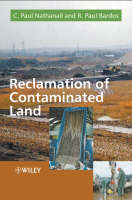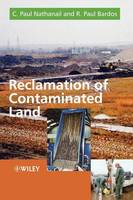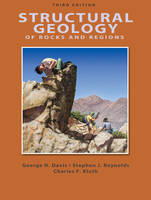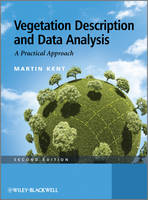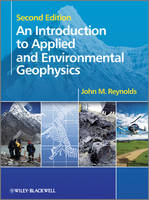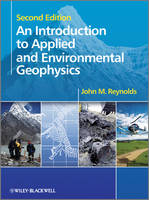Isotopes
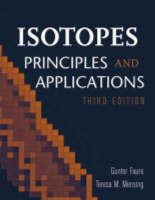 -15%
portes grátis
-15%
portes grátis
Isotopes
Principles and Applications
Mensing, Teresa M.; Faure, Gunter
John Wiley & Sons Inc
11/2004
928
Dura
Inglês
9780471384373
15 a 20 dias
1874
Part I Principles of Atomic Physics 1
1 Nuclear Systematics 3
1.1 Discovery of Radioactivity 3
1.2 Internal Structure of Atoms 4
1.3 Origin of the Elements 12
1.4 Summary 14
References 14
2 Decay Modes of Radionuclides 15
2.1 Beta-Decay 15
2.2 Alpha-Decay 24
2.3 Spontaneous and Induced Fission 28
2.4 Summary 33
References 33
3 Radioactive Decay 34
3.1 Law of Radioactivity 34
3.2 Radiation Detectors 37
3.3 Growth of Radioactive Daughters 39
3.4 Units of Radioactivity and Dosage 42
3.5 Medical Effects of Ionizing Radiation 43
3.6 Sources of Environmental Radioactivity 46
3.7 Nuclear Reactions 47
3.8 Neutron Activation Analysis 47
3.9 Summary 53
References 53
4 Geochronometry 55
4.1 Growth of Radiogenic Daughters 55
4.2 Assumptions for Dating 57
4.3 Fitting of Isochrons 60
4.4 Mass Spectrometry and Isotope Dilution 64
4.5 Summary 71
References 71
Part II Radiogenic Isotope Geochronometers 73
5 The Rb-Sr Method 75
5.1 Geochemistry of Rb and Sr 75
5.2 Principles of Dating 76
5.3 Rb-Sr Isochrons 80
5.4 Dating Metamorphic Rocks 89
5.5 Dating Sedimentary Rocks 95
5.6 Summary 106
References 107
6 The K-Ar Method 113
6.1 Principles and Methodology 113
6.2 Retention of 40Ar by Minerals 115
6.3 K-Ar Isochrons 120
6.4 Volcanic Rocks of Tertiary Age 121
6.5 Dating Sedimentary Rocks 126
6.6 Metamorphic Veil 132
6.7 Precambrian Timescales 134
6.8 Summary 138
References 138
7 The 40Ar*/ 39Ar Method 144
7.1 Principles and Methodology 144
7.2 Incremental Heating Technique 147
7.3 Excess 40Ar 151
7.4 Argon Isotope Correlation Diagram 153
7.5 Laser Ablation 157
7.6 Sedimentary Rocks 159
7.7 Metasedimentary Rocks 162
7.8 Metamorphic Rocks: Broken Hill, N.S.W., Australia 166
7.9 Thermochronometry: Haliburton Highlands, Ontario, Canada 1
7.10 Summary 171
References 172
8 The K-Ca Method 180
8.1 Principles and Methodology 180
8.2 Isotope Geochemistry of Calcium 183
8.3 Summary 190
References 191
9 The Sm-Nd Method 194
9.1 Geochemistry of Sm and Nd 194
9.2 Principles and Methodology 197
9.3 Dating by the Sm-Nd Method 202
9.4 Meteorites and Martian Rocks 207
9.5 Lunar Rocks 209
9.6 Summary 211
References 211
10 The U-Pb, Th-Pb, and Pb-Pb Methods 214
10.1 Geochemistry of U and Th 214
10.2 Decay of U and Th Isotopes 215
10.3 Principles and Methodology 218
10.4 U,Th-Pb Dates, Boulder Creek Batholith, Colorado 221
10.5 Wetherill's Concordia 223
10.6 Alternative Pb Loss Models 227
10.7 Refinements in Analytical Methods 230
10.8 Dating Detrital Zircon Grains 233
10.9 Tera-Wasserburg Concordia 236
10.10 U-Pb, Th-Pb, and Pb-Pb Isochrons (Granite Mountains, Wyoming) 240
10.11 Pb-Pb Dating of Carbonate Rocks 242
10.12 U-Pb and Th-Pb Isochrons of Carbonate Rocks 245
10.13 Summary 249
References 250
11 The Common-Lead Method 256
11.1 The Holmes-Houtermans Model 256
11.2 Dating Common Lead 261
11.3 Dating K-Feldspar 268
11.4 Anomalous Leads in Galena 270
11.5 Lead-Zinc Deposits, Southeastern Missouri 274
11.6 Multistage Leads 279
11.7 Summary 280
References 281
12 The Lu-Hf Method 284
12.1 Geochemistry of Lu and Hf 284
12.2 Principles and Methodology 286
12.3 CHUR and Epsilon 288
12.4 Model Hf Dates Derived from CHUR 289
12.5 Applications of Lu-Hf Dating 290
12.6 Summary 294
References 294
13 The Re-Os Method 297
13.1 Rhenium and Osmium in Terrestrial and Extraterrestrial Rocks 297
13.2 Principles and Methodology 301
13.3 Molybdenite and 187Re-187Os Isochrons 302
13.4 Meteorites and CHUR-Os 305
13.5 The Cu-Ni Sulfide Ores, Noril'sk, Siberia 310
13.6 Origin of Other Sulfide Ore Deposits 312
13.7 Metallic PGE Minerals 313
13.8 Gold Deposits of the Witwatersrand, South Africa 314
13.9 The Pt-Os Method 316
13.10 Summary 317
References 317
14 The La-Ce Method 322
14.1 Geochemistry of La and Ce 323
14.2 Principles and Methodology 324
14.3 La-Ce Isochrons 327
14.4 Meteorites and CHUR-Ce 329
14.5 Volcanic Rocks 331
14.6 Cerium in the Oceans 332
14.7 Summary 337
References 338
15 The La-Ba Method 340
15.1 Geochemistry of La and Ba 340
15.2 Principles and Methodology 341
15.3 Amitsoq Gneiss, West Greenland 342
15.4 Mustikkamaki Pegmatite, Finland 343
15.5 Summary 343
References 343
Part III Geochemistry of Radiogenic Isotopes 345
16 Mixing Theory 347
16.1 Chemical Compositions of Mixtures 347
16.2 Isotopic Mixtures of Sr 350
16.3 Isotopic Mixtures of Sr and Nd 352
16.4 Three-Component Isotopic Mixtures 355
16.5 Applications 356
16.6 Summary 361
References 361
17 Origin of Igneous Rocks 363
17.1 The Plume Theory 363
17.2 Magma Sources in the Mantle 364
17.3 Midocean Ridge Basalt 365
17.4 Basalt and Rhyolite of Iceland 369
17.5 The Hawaiian Islands 375
17.6 HIMU Magma Sources of Polynesia 380
17.7 Subduction Zones 382
17.8 Continental Flood Basalt 389
17.9 Alkali-Rich Lavas 394
17.10 Origin of Granite 399
17.11 Summary 405
References 406
18 Water and Sediment 412
18.1 Strontium in Streams 412
18.2 Sediment in Streams 419
18.3 Zaire and Amazon Rivers 426
18.4 Summary 433
References 433
19 The Oceans 436
19.1 Strontium in the Phanerozoic Oceans 436
19.2 Strontium in the Precambrian Oceans 447
19.3 Neodymium in the Oceans 451
19.4 Lead in the Oceans 463
19.5 Osmium in Continental Runoff 470
19.6 Osmium in the Oceans 475
19.7 Hafnium in the Oceans 480
19.8 Summary 486
References 487
Part IV Short-Lived Radionuclides 495
20 Uranium/Thorium-Series Disequilibria 497
20.1 238U/234U-230Th-Series Geochronometers 498
20.2 Radium 508
20.3 Protactinium 516
20.4 Lead-210 521
20.5 Archeology and Anthropology 527
20.6 Volcanic Rocks 531
20.7 Magma Formation 535
20.8 Summary 539
References 540
21 Helium and Tritium 546
21.1 U-Th/He Method of Dating 546
21.2 Thermochronometry 551
21.3 He Dating of Iron-Ore Deposits 554
21.4 Tritium-3He Dating 555
21.5 Meteorites and Oceanic Basalt 560
21.6 Continental Crust 566
21.7 Summary 571
References 572
22 Radiation-Damage Methods 577
22.1 Alpha-Decay 577
22.2 Fission Tracks 580
22.3 Applications of Fission-Track Dates 592
22.4 Thermoluminescence 595
22.5 Electron-Spin Resonance 603
22.6 Summary 606
References 608
23 Cosmogenic Radionuclides 613
23.1 Carbon-14 (Radiocarbon) 614
23.2 Beryllium-10 and Aluminum-26 (Atmospheric) 625
23.3 Exposure Dating (10Be and 26Al) 633
23.4 Cosmogenic and Thermonuclear 36Cl 639
23.5 Meteorites 641
23.6 Other Long-Lived Cosmogenic Radionuclides 646
23.7 Summary 646
References 647
24 Extinct Radionuclides 654
24.1 The Pd-Ag Chronometer 655
24.2 The Al-Mg Chronometer 657
24.3 The Hf-W Chronometer 659
24.4 FUN in the Solar Nebula 662
24.5 Summary 663
References 664
25 Thermonuclear Radionuclides 667
25.1 Fission Products and Transuranium Elements 667
25.2 Strontium-90 in the Environment 672
25.3 Cesium-137 in the Environment 678
25.4 Arctic Ocean: 90Sr/137Cs, 239,240Pu, and 241Am 682
25.5 Summary 686
References 687
Part V Fractionation of Stable Isotopes 691
26 Hydrogen and Oxygen 693
26.1 Atomic Properties 693
26.2 Mathematical Relations 695
26.3 Meteoric Precipitation 697
26.4 Paleothermometry (Carbonates) 704
26.5 Silicate Minerals and Rocks 709
26.6 Water-Rock Interactions (Rocks) 714
26.7 Water-Rock Interactions (Water) 718
26.8 Clay Minerals 725
26.9 Marine Carbonates 727
26.10 Marine Phosphates 730
26.11 Biogenic Silica and Hydroxides of Fe and Al 735
26.12 Chert (Phanerozoic and Precambrian) 736
26.13 Extraterrestrial Rocks 738
26.14 Summary 743
References 744
27 Carbon 753
27.1 Biosphere 754
27.2 Life in the Precambrian Oceans 757
27.3 Fossil Fuel 761
27.4 Carbon-Isotope Stratigraphy (Phanerozoic) 763
27.5 Precambrian Carbonates 768
27.6 Igneous and Metamorphic Rocks 774
27.7 Extraterrestrial Carbon 785
27.8 Search for Life on Mars 790
27.9 Summary 792
References 793
28 Nitrogen 803
28.1 Geochemistry 803
28.2 Isotope Fractionation 805
28.3 Nitrogen on the Surface of the Earth 806
28.4 Fossil Fuels 808
28.5 Igneous Rocks and the Mantle 811
28.6 Ultramafic Xenoliths 812
28.7 Diamonds 813
28.8 Meteorites 815
28.9 Moon 817
28.10 Mars 818
28.11 Summary 820
References 820
29 Sulfur 824
29.1 Isotope Geochemistry 824
29.2 Biogenic Isotope Fractionation 825
29.3 Sulfur in Recent Sediment 827
29.4 Fossil Fuels 828
29.5 Native Sulfur Deposits 830
29.6 Sedimentary Rocks of Precambrian Age 831
29.7 Isotopic Evolution of Marine Sulfate 833
29.8 Igneous Rocks 835
29.9 Sulfide Ore Deposits 840
29.10 Sulfur in the Environment 843
29.11 Mass-Independent Isotope Fractionation 846
29.12 Summary 847
References 849
30 Boron and Other Elements 854
30.1 Boron 855
30.2 Lithium 859
30.3 Silicon 863
30.4 Chlorine 868
30.5 Postscript 870
References 870
Index 875
International Geological Timescale (2002) 897
Part I Principles of Atomic Physics 1
1 Nuclear Systematics 3
1.1 Discovery of Radioactivity 3
1.2 Internal Structure of Atoms 4
1.3 Origin of the Elements 12
1.4 Summary 14
References 14
2 Decay Modes of Radionuclides 15
2.1 Beta-Decay 15
2.2 Alpha-Decay 24
2.3 Spontaneous and Induced Fission 28
2.4 Summary 33
References 33
3 Radioactive Decay 34
3.1 Law of Radioactivity 34
3.2 Radiation Detectors 37
3.3 Growth of Radioactive Daughters 39
3.4 Units of Radioactivity and Dosage 42
3.5 Medical Effects of Ionizing Radiation 43
3.6 Sources of Environmental Radioactivity 46
3.7 Nuclear Reactions 47
3.8 Neutron Activation Analysis 47
3.9 Summary 53
References 53
4 Geochronometry 55
4.1 Growth of Radiogenic Daughters 55
4.2 Assumptions for Dating 57
4.3 Fitting of Isochrons 60
4.4 Mass Spectrometry and Isotope Dilution 64
4.5 Summary 71
References 71
Part II Radiogenic Isotope Geochronometers 73
5 The Rb-Sr Method 75
5.1 Geochemistry of Rb and Sr 75
5.2 Principles of Dating 76
5.3 Rb-Sr Isochrons 80
5.4 Dating Metamorphic Rocks 89
5.5 Dating Sedimentary Rocks 95
5.6 Summary 106
References 107
6 The K-Ar Method 113
6.1 Principles and Methodology 113
6.2 Retention of 40Ar by Minerals 115
6.3 K-Ar Isochrons 120
6.4 Volcanic Rocks of Tertiary Age 121
6.5 Dating Sedimentary Rocks 126
6.6 Metamorphic Veil 132
6.7 Precambrian Timescales 134
6.8 Summary 138
References 138
7 The 40Ar*/ 39Ar Method 144
7.1 Principles and Methodology 144
7.2 Incremental Heating Technique 147
7.3 Excess 40Ar 151
7.4 Argon Isotope Correlation Diagram 153
7.5 Laser Ablation 157
7.6 Sedimentary Rocks 159
7.7 Metasedimentary Rocks 162
7.8 Metamorphic Rocks: Broken Hill, N.S.W., Australia 166
7.9 Thermochronometry: Haliburton Highlands, Ontario, Canada 1
7.10 Summary 171
References 172
8 The K-Ca Method 180
8.1 Principles and Methodology 180
8.2 Isotope Geochemistry of Calcium 183
8.3 Summary 190
References 191
9 The Sm-Nd Method 194
9.1 Geochemistry of Sm and Nd 194
9.2 Principles and Methodology 197
9.3 Dating by the Sm-Nd Method 202
9.4 Meteorites and Martian Rocks 207
9.5 Lunar Rocks 209
9.6 Summary 211
References 211
10 The U-Pb, Th-Pb, and Pb-Pb Methods 214
10.1 Geochemistry of U and Th 214
10.2 Decay of U and Th Isotopes 215
10.3 Principles and Methodology 218
10.4 U,Th-Pb Dates, Boulder Creek Batholith, Colorado 221
10.5 Wetherill's Concordia 223
10.6 Alternative Pb Loss Models 227
10.7 Refinements in Analytical Methods 230
10.8 Dating Detrital Zircon Grains 233
10.9 Tera-Wasserburg Concordia 236
10.10 U-Pb, Th-Pb, and Pb-Pb Isochrons (Granite Mountains, Wyoming) 240
10.11 Pb-Pb Dating of Carbonate Rocks 242
10.12 U-Pb and Th-Pb Isochrons of Carbonate Rocks 245
10.13 Summary 249
References 250
11 The Common-Lead Method 256
11.1 The Holmes-Houtermans Model 256
11.2 Dating Common Lead 261
11.3 Dating K-Feldspar 268
11.4 Anomalous Leads in Galena 270
11.5 Lead-Zinc Deposits, Southeastern Missouri 274
11.6 Multistage Leads 279
11.7 Summary 280
References 281
12 The Lu-Hf Method 284
12.1 Geochemistry of Lu and Hf 284
12.2 Principles and Methodology 286
12.3 CHUR and Epsilon 288
12.4 Model Hf Dates Derived from CHUR 289
12.5 Applications of Lu-Hf Dating 290
12.6 Summary 294
References 294
13 The Re-Os Method 297
13.1 Rhenium and Osmium in Terrestrial and Extraterrestrial Rocks 297
13.2 Principles and Methodology 301
13.3 Molybdenite and 187Re-187Os Isochrons 302
13.4 Meteorites and CHUR-Os 305
13.5 The Cu-Ni Sulfide Ores, Noril'sk, Siberia 310
13.6 Origin of Other Sulfide Ore Deposits 312
13.7 Metallic PGE Minerals 313
13.8 Gold Deposits of the Witwatersrand, South Africa 314
13.9 The Pt-Os Method 316
13.10 Summary 317
References 317
14 The La-Ce Method 322
14.1 Geochemistry of La and Ce 323
14.2 Principles and Methodology 324
14.3 La-Ce Isochrons 327
14.4 Meteorites and CHUR-Ce 329
14.5 Volcanic Rocks 331
14.6 Cerium in the Oceans 332
14.7 Summary 337
References 338
15 The La-Ba Method 340
15.1 Geochemistry of La and Ba 340
15.2 Principles and Methodology 341
15.3 Amitsoq Gneiss, West Greenland 342
15.4 Mustikkamaki Pegmatite, Finland 343
15.5 Summary 343
References 343
Part III Geochemistry of Radiogenic Isotopes 345
16 Mixing Theory 347
16.1 Chemical Compositions of Mixtures 347
16.2 Isotopic Mixtures of Sr 350
16.3 Isotopic Mixtures of Sr and Nd 352
16.4 Three-Component Isotopic Mixtures 355
16.5 Applications 356
16.6 Summary 361
References 361
17 Origin of Igneous Rocks 363
17.1 The Plume Theory 363
17.2 Magma Sources in the Mantle 364
17.3 Midocean Ridge Basalt 365
17.4 Basalt and Rhyolite of Iceland 369
17.5 The Hawaiian Islands 375
17.6 HIMU Magma Sources of Polynesia 380
17.7 Subduction Zones 382
17.8 Continental Flood Basalt 389
17.9 Alkali-Rich Lavas 394
17.10 Origin of Granite 399
17.11 Summary 405
References 406
18 Water and Sediment 412
18.1 Strontium in Streams 412
18.2 Sediment in Streams 419
18.3 Zaire and Amazon Rivers 426
18.4 Summary 433
References 433
19 The Oceans 436
19.1 Strontium in the Phanerozoic Oceans 436
19.2 Strontium in the Precambrian Oceans 447
19.3 Neodymium in the Oceans 451
19.4 Lead in the Oceans 463
19.5 Osmium in Continental Runoff 470
19.6 Osmium in the Oceans 475
19.7 Hafnium in the Oceans 480
19.8 Summary 486
References 487
Part IV Short-Lived Radionuclides 495
20 Uranium/Thorium-Series Disequilibria 497
20.1 238U/234U-230Th-Series Geochronometers 498
20.2 Radium 508
20.3 Protactinium 516
20.4 Lead-210 521
20.5 Archeology and Anthropology 527
20.6 Volcanic Rocks 531
20.7 Magma Formation 535
20.8 Summary 539
References 540
21 Helium and Tritium 546
21.1 U-Th/He Method of Dating 546
21.2 Thermochronometry 551
21.3 He Dating of Iron-Ore Deposits 554
21.4 Tritium-3He Dating 555
21.5 Meteorites and Oceanic Basalt 560
21.6 Continental Crust 566
21.7 Summary 571
References 572
22 Radiation-Damage Methods 577
22.1 Alpha-Decay 577
22.2 Fission Tracks 580
22.3 Applications of Fission-Track Dates 592
22.4 Thermoluminescence 595
22.5 Electron-Spin Resonance 603
22.6 Summary 606
References 608
23 Cosmogenic Radionuclides 613
23.1 Carbon-14 (Radiocarbon) 614
23.2 Beryllium-10 and Aluminum-26 (Atmospheric) 625
23.3 Exposure Dating (10Be and 26Al) 633
23.4 Cosmogenic and Thermonuclear 36Cl 639
23.5 Meteorites 641
23.6 Other Long-Lived Cosmogenic Radionuclides 646
23.7 Summary 646
References 647
24 Extinct Radionuclides 654
24.1 The Pd-Ag Chronometer 655
24.2 The Al-Mg Chronometer 657
24.3 The Hf-W Chronometer 659
24.4 FUN in the Solar Nebula 662
24.5 Summary 663
References 664
25 Thermonuclear Radionuclides 667
25.1 Fission Products and Transuranium Elements 667
25.2 Strontium-90 in the Environment 672
25.3 Cesium-137 in the Environment 678
25.4 Arctic Ocean: 90Sr/137Cs, 239,240Pu, and 241Am 682
25.5 Summary 686
References 687
Part V Fractionation of Stable Isotopes 691
26 Hydrogen and Oxygen 693
26.1 Atomic Properties 693
26.2 Mathematical Relations 695
26.3 Meteoric Precipitation 697
26.4 Paleothermometry (Carbonates) 704
26.5 Silicate Minerals and Rocks 709
26.6 Water-Rock Interactions (Rocks) 714
26.7 Water-Rock Interactions (Water) 718
26.8 Clay Minerals 725
26.9 Marine Carbonates 727
26.10 Marine Phosphates 730
26.11 Biogenic Silica and Hydroxides of Fe and Al 735
26.12 Chert (Phanerozoic and Precambrian) 736
26.13 Extraterrestrial Rocks 738
26.14 Summary 743
References 744
27 Carbon 753
27.1 Biosphere 754
27.2 Life in the Precambrian Oceans 757
27.3 Fossil Fuel 761
27.4 Carbon-Isotope Stratigraphy (Phanerozoic) 763
27.5 Precambrian Carbonates 768
27.6 Igneous and Metamorphic Rocks 774
27.7 Extraterrestrial Carbon 785
27.8 Search for Life on Mars 790
27.9 Summary 792
References 793
28 Nitrogen 803
28.1 Geochemistry 803
28.2 Isotope Fractionation 805
28.3 Nitrogen on the Surface of the Earth 806
28.4 Fossil Fuels 808
28.5 Igneous Rocks and the Mantle 811
28.6 Ultramafic Xenoliths 812
28.7 Diamonds 813
28.8 Meteorites 815
28.9 Moon 817
28.10 Mars 818
28.11 Summary 820
References 820
29 Sulfur 824
29.1 Isotope Geochemistry 824
29.2 Biogenic Isotope Fractionation 825
29.3 Sulfur in Recent Sediment 827
29.4 Fossil Fuels 828
29.5 Native Sulfur Deposits 830
29.6 Sedimentary Rocks of Precambrian Age 831
29.7 Isotopic Evolution of Marine Sulfate 833
29.8 Igneous Rocks 835
29.9 Sulfide Ore Deposits 840
29.10 Sulfur in the Environment 843
29.11 Mass-Independent Isotope Fractionation 846
29.12 Summary 847
References 849
30 Boron and Other Elements 854
30.1 Boron 855
30.2 Lithium 859
30.3 Silicon 863
30.4 Chlorine 868
30.5 Postscript 870
References 870
Index 875
International Geological Timescale (2002) 897







